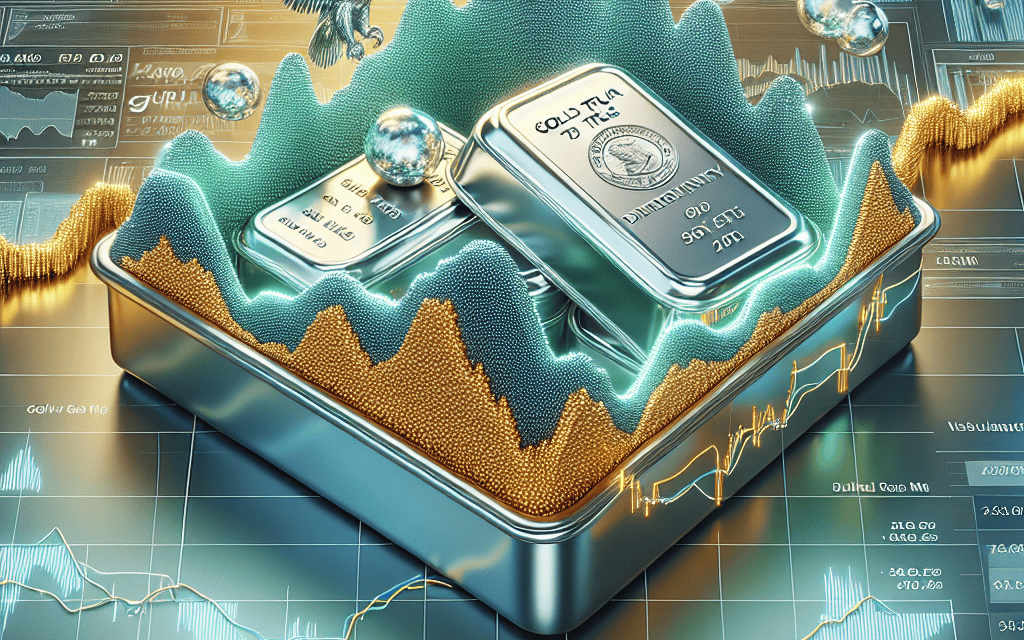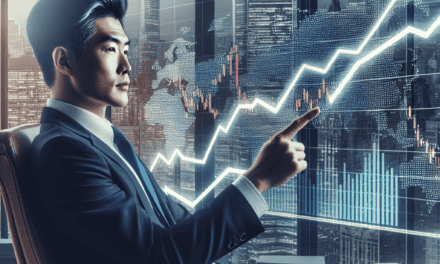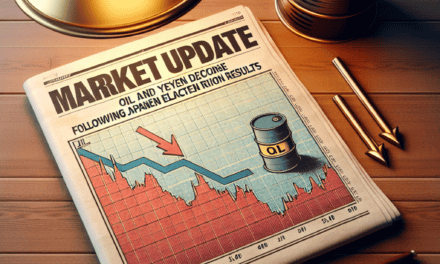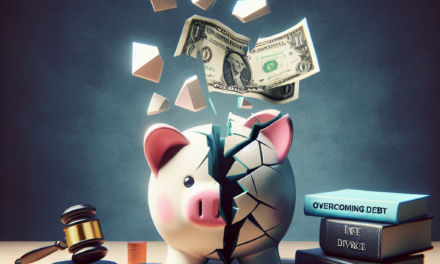“Silver ETFs Shine Brighter: Outpacing GLD in the Metals Surge”
Introduction
In a dynamic shift within the precious metals market, Silver ETFs have recently outperformed the SPDR Gold Shares (GLD), marking a significant milestone in the ongoing metals rally. This development highlights a growing investor interest in silver as a strategic asset, driven by its industrial applications and potential for higher returns compared to gold. The surge in silver ETF investments reflects broader market trends and economic factors, including inflationary pressures and supply chain disruptions, which have amplified silver’s appeal as both a safe haven and a growth-oriented investment. As silver continues to gain traction, its performance relative to gold underscores the evolving landscape of precious metals investing.
Silver ETFs Outperform Gold: Key Drivers Behind the Surge
In recent months, the financial markets have witnessed a remarkable shift in the dynamics of precious metals investments, with silver exchange-traded funds (ETFs) outperforming their gold counterparts, particularly the SPDR Gold Shares (GLD). This development has captured the attention of investors and analysts alike, prompting a closer examination of the factors driving this trend. As the metals rally gains momentum, several key drivers have emerged, shedding light on why silver ETFs are currently outshining gold.
To begin with, the industrial demand for silver has played a significant role in its recent surge. Unlike gold, which is primarily viewed as a store of value, silver has extensive industrial applications, particularly in the fields of electronics, solar energy, and automotive manufacturing. The global push towards renewable energy and technological advancements has led to an increased demand for silver, as it is a critical component in solar panels and electronic devices. This heightened demand has provided a robust foundation for silver’s price appreciation, thereby boosting the performance of silver ETFs.
Moreover, the economic recovery following the COVID-19 pandemic has further fueled the demand for silver. As economies around the world gradually reopen and industrial activities resume, the need for silver in manufacturing processes has intensified. This resurgence in industrial activity has not only supported silver prices but has also attracted investors seeking to capitalize on the metal’s dual role as both an industrial commodity and a precious metal. Consequently, silver ETFs have become an attractive investment vehicle for those looking to benefit from the ongoing economic recovery.
In addition to industrial demand, the relative affordability of silver compared to gold has also contributed to its recent outperformance. Silver is often referred to as “the poor man’s gold” due to its lower price point, making it more accessible to a broader range of investors. This affordability factor has led to increased interest in silver ETFs, particularly among retail investors who may be priced out of the gold market. As a result, the influx of investment into silver ETFs has further propelled their performance, surpassing that of gold-focused funds like GLD.
Furthermore, the current macroeconomic environment has played a pivotal role in shaping investor sentiment towards silver. With inflationary pressures mounting and central banks maintaining accommodative monetary policies, investors are increasingly seeking assets that can serve as a hedge against inflation. While gold has traditionally been viewed as a safe haven in times of economic uncertainty, silver’s dual role as both a precious metal and an industrial commodity has made it an appealing alternative. This shift in investor sentiment has been reflected in the growing popularity of silver ETFs, which offer a convenient and cost-effective way to gain exposure to the metal.
In conclusion, the recent outperformance of silver ETFs over gold, particularly GLD, can be attributed to a confluence of factors, including rising industrial demand, economic recovery, relative affordability, and the current macroeconomic environment. As these drivers continue to influence the market, silver ETFs are likely to remain a focal point for investors seeking to capitalize on the ongoing metals rally. While the future trajectory of silver and gold prices remains uncertain, the current trend underscores the importance of understanding the unique dynamics at play in the precious metals market.
Investment Strategies: Capitalizing on Silver’s Momentum
In recent months, the investment landscape has witnessed a notable shift as silver exchange-traded funds (ETFs) have outperformed the SPDR Gold Shares (GLD) amid a robust rally in the metals market. This development has captured the attention of investors seeking to capitalize on the momentum of silver, a metal often overshadowed by its more illustrious counterpart, gold. As the dynamics of the metals market evolve, understanding the factors driving this trend and the potential implications for investment strategies becomes crucial.
To begin with, the surge in silver ETFs can be attributed to several interrelated factors. Firstly, the industrial demand for silver has been on the rise, driven by its essential role in various sectors, including electronics, solar energy, and automotive industries. As the global economy continues to recover and expand, the demand for silver in these applications is expected to grow, thereby supporting its price. Moreover, silver’s dual role as both an industrial metal and a store of value has made it an attractive option for investors seeking diversification in their portfolios.
In addition to industrial demand, macroeconomic factors have also played a significant role in the recent rally of silver ETFs. The persistent concerns over inflation and currency devaluation have prompted investors to seek refuge in precious metals, traditionally viewed as hedges against economic uncertainty. While gold has long been the go-to asset for such purposes, silver’s lower price point and potential for higher returns have made it an appealing alternative for both institutional and retail investors.
Furthermore, the performance of silver ETFs relative to GLD can be partly explained by the changing dynamics within the ETF market itself. The proliferation of silver-focused ETFs has provided investors with more options to gain exposure to the metal, thereby increasing its accessibility and appeal. These ETFs offer a convenient and cost-effective way to invest in silver without the need to physically hold the metal, making them an attractive choice for those looking to capitalize on short-term price movements or long-term trends.
As silver ETFs continue to gain traction, investors are increasingly considering how to incorporate them into their broader investment strategies. One approach is to view silver as a complementary asset to gold, leveraging its unique properties and market dynamics to enhance portfolio diversification. By allocating a portion of their investments to silver ETFs, investors can potentially benefit from the metal’s industrial demand and its role as a hedge against inflation, while also mitigating the risks associated with over-reliance on a single asset class.
Moreover, the current market environment presents an opportunity for investors to reassess their risk tolerance and investment objectives. With silver ETFs outperforming GLD, some may choose to increase their exposure to silver, while others may opt for a more balanced approach, maintaining a diversified portfolio that includes both metals. Ultimately, the decision will depend on individual preferences and market outlooks.
In conclusion, the recent outperformance of silver ETFs over GLD in the metals rally underscores the evolving dynamics of the investment landscape. As silver continues to gain prominence, investors are presented with new opportunities to capitalize on its momentum. By understanding the factors driving this trend and carefully considering their investment strategies, investors can position themselves to potentially benefit from the ongoing shifts in the metals market.
Market Analysis: Why Silver ETFs Are Gaining Traction
In recent months, the financial markets have witnessed a notable shift in investor sentiment towards silver exchange-traded funds (ETFs), as these investment vehicles have begun to outpace the traditionally dominant SPDR Gold Shares (GLD) in the ongoing metals rally. This development has sparked considerable interest among market analysts and investors alike, prompting a closer examination of the factors driving this trend. As the global economic landscape continues to evolve, several key elements have contributed to the growing appeal of silver ETFs, positioning them as a compelling alternative to gold investments.
To begin with, the industrial demand for silver has been a significant catalyst in the recent surge of silver ETFs. Unlike gold, which is primarily valued for its status as a safe-haven asset, silver possesses a dual character, serving both as a precious metal and an industrial commodity. This duality has become increasingly relevant as the world transitions towards greener technologies, such as solar energy and electric vehicles, both of which rely heavily on silver for their production. Consequently, the rising demand for these technologies has bolstered the industrial demand for silver, thereby enhancing the attractiveness of silver ETFs to investors seeking exposure to this growth potential.
Moreover, the relative affordability of silver compared to gold has also played a crucial role in the growing popularity of silver ETFs. As gold prices have reached historically high levels, some investors have turned to silver as a more accessible entry point into the precious metals market. This shift is particularly evident among retail investors, who may find the lower price point of silver more appealing for portfolio diversification. Additionally, the potential for higher percentage gains in silver, given its lower starting price, has further incentivized investors to consider silver ETFs as a viable investment option.
In addition to these factors, the macroeconomic environment has also contributed to the increased interest in silver ETFs. With inflationary pressures mounting and central banks around the world maintaining accommodative monetary policies, investors have been seeking assets that can serve as a hedge against inflation. While gold has traditionally fulfilled this role, silver’s historical performance during inflationary periods has not gone unnoticed. As a result, silver ETFs have emerged as an attractive alternative for those looking to protect their portfolios from the erosive effects of inflation.
Furthermore, the diversification benefits offered by silver ETFs cannot be overlooked. By investing in a basket of silver-related assets, these ETFs provide investors with exposure to a broad range of companies involved in the silver supply chain, from mining to production. This diversification can help mitigate the risks associated with investing in individual stocks, making silver ETFs an appealing choice for risk-averse investors.
In conclusion, the recent outperformance of silver ETFs over GLD in the metals rally can be attributed to a confluence of factors, including rising industrial demand, relative affordability, macroeconomic conditions, and diversification benefits. As the global economy continues to navigate uncertain waters, silver ETFs are likely to remain a focal point for investors seeking to capitalize on the unique opportunities presented by this versatile metal. As such, market participants will undoubtedly continue to monitor the dynamics of silver ETFs closely, as they assess their potential role in a well-rounded investment strategy.
Comparing Silver and Gold ETFs: A Performance Review
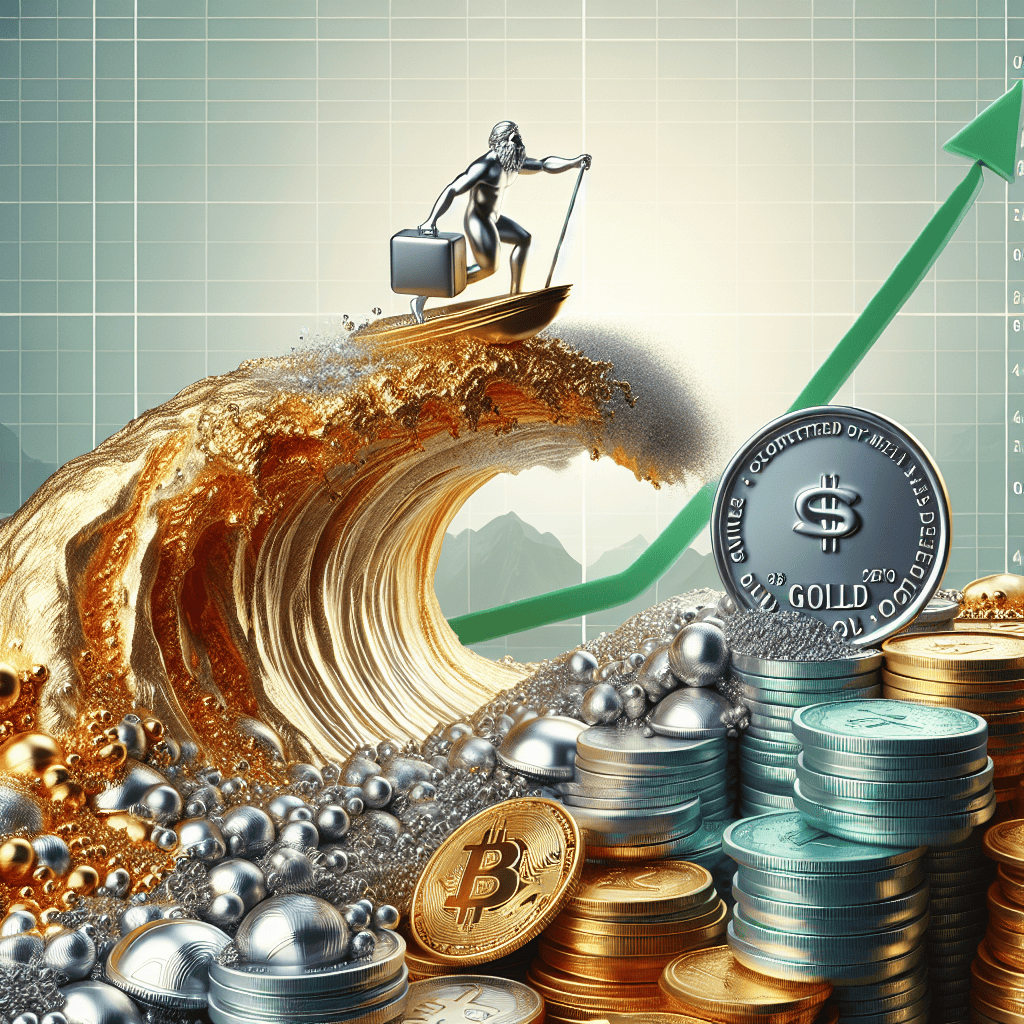
In recent months, the financial markets have witnessed a notable shift in the dynamics of precious metal investments, with silver exchange-traded funds (ETFs) outperforming their gold counterparts, particularly the SPDR Gold Shares (GLD). This development has captured the attention of investors and analysts alike, prompting a closer examination of the factors contributing to this trend. As we delve into the performance of silver and gold ETFs, it is essential to consider the broader economic context and the unique characteristics of these metals that influence their market behavior.
To begin with, silver and gold have long been regarded as safe-haven assets, offering protection against inflation and economic uncertainty. However, their market performance can diverge significantly due to differences in industrial demand, supply dynamics, and investor sentiment. In the current rally, silver ETFs have gained an edge over gold, driven by a combination of factors that have bolstered silver’s appeal. One of the primary reasons for this outperformance is the increasing industrial demand for silver, particularly in the renewable energy sector. Silver’s role in solar panel production and other green technologies has positioned it as a critical component in the transition to a more sustainable economy. Consequently, as governments and corporations worldwide intensify their efforts to combat climate change, the demand for silver is expected to rise, providing a strong tailwind for silver ETFs.
Moreover, the supply side of the silver market has also played a crucial role in its recent rally. Unlike gold, which is primarily mined for investment purposes, silver’s supply is heavily influenced by its byproduct status in the mining of other metals such as copper and lead. This means that fluctuations in the production of these base metals can have a significant impact on silver’s availability. Recent disruptions in mining operations due to geopolitical tensions and environmental regulations have constrained silver supply, further supporting its price and, by extension, the performance of silver ETFs.
In contrast, gold ETFs like GLD have faced headwinds despite the metal’s traditional status as a hedge against inflation and currency devaluation. One contributing factor is the relative stability of global economic conditions, which has reduced the urgency for investors to seek refuge in gold. Additionally, the strengthening of the US dollar has exerted downward pressure on gold prices, as a stronger dollar makes gold more expensive for holders of other currencies. This has led to a more subdued performance for gold ETFs compared to their silver counterparts.
Furthermore, investor sentiment has played a pivotal role in shaping the performance of these ETFs. Silver’s lower price point compared to gold makes it an attractive option for retail investors seeking exposure to precious metals without committing significant capital. This accessibility, combined with the metal’s potential for higher returns due to its industrial applications, has fueled increased interest in silver ETFs. As a result, these funds have experienced substantial inflows, further amplifying their performance relative to gold ETFs.
In conclusion, the recent outperformance of silver ETFs over GLD in the metals rally can be attributed to a confluence of factors, including rising industrial demand, supply constraints, and shifting investor preferences. While both silver and gold continue to serve as valuable components of a diversified investment portfolio, the current market environment has favored silver, highlighting the importance of understanding the unique dynamics that drive each metal’s performance. As the global economy evolves, investors will need to remain vigilant and adaptable, considering both macroeconomic trends and sector-specific developments when evaluating their precious metal investments.
The Role of Industrial Demand in Silver’s ETF Success
In recent months, the financial markets have witnessed a notable shift in the dynamics of precious metals investment, with silver exchange-traded funds (ETFs) surpassing the SPDR Gold Shares (GLD) in terms of performance. This development has sparked considerable interest among investors and analysts alike, prompting a closer examination of the factors driving silver’s ascent. A key element in this narrative is the role of industrial demand, which has significantly contributed to the success of silver ETFs in the current metals rally.
To understand the impact of industrial demand on silver’s performance, it is essential to recognize the dual nature of silver as both a precious and an industrial metal. Unlike gold, which is primarily valued for its status as a safe-haven asset and a store of value, silver has extensive applications in various industrial sectors. This duality provides silver with a unique advantage, as it benefits from both investment demand and industrial consumption. Consequently, when industrial demand surges, it can have a pronounced effect on silver prices and, by extension, silver ETFs.
In recent years, the global push towards renewable energy and technological advancements has significantly bolstered industrial demand for silver. The metal’s excellent electrical conductivity makes it a critical component in the production of solar panels, which are integral to the burgeoning solar energy industry. As countries worldwide strive to meet ambitious renewable energy targets, the demand for solar panels—and thus silver—has increased substantially. This trend is expected to continue, further supporting silver’s industrial demand.
Moreover, silver’s role in the electronics industry cannot be overlooked. The proliferation of electronic devices, from smartphones to electric vehicles, has led to a steady rise in the consumption of silver. As technology continues to evolve and the demand for electronic products grows, silver’s industrial applications are likely to expand, providing a sustained boost to its demand. This, in turn, enhances the appeal of silver ETFs, as investors seek to capitalize on the metal’s industrial potential.
In addition to these factors, the ongoing global economic recovery has played a pivotal role in driving industrial demand for silver. As economies rebound from the disruptions caused by the COVID-19 pandemic, industrial activity has picked up pace, leading to increased consumption of raw materials, including silver. This resurgence in industrial activity has further amplified the demand for silver, contributing to the metal’s strong performance in the market.
Furthermore, the current macroeconomic environment has also favored silver over gold. With inflationary pressures mounting and interest rates remaining relatively low, investors have been drawn to assets that offer both growth potential and a hedge against inflation. Silver, with its industrial applications and historical role as a store of value, fits this profile, making it an attractive option for investors seeking diversification and protection against economic uncertainties.
In conclusion, the success of silver ETFs in surpassing GLD during the recent metals rally can be largely attributed to the robust industrial demand for silver. The metal’s unique position as both a precious and industrial asset has allowed it to benefit from the confluence of factors driving industrial consumption. As the global economy continues to evolve and the demand for renewable energy and technology grows, silver’s industrial applications are likely to remain a key driver of its market performance, ensuring its continued appeal to investors.
Silver’s Bull Run: What It Means for Precious Metals Investors
In recent months, the precious metals market has witnessed a remarkable shift, with silver exchange-traded funds (ETFs) surpassing the SPDR Gold Shares (GLD) in terms of performance. This development has captured the attention of investors and analysts alike, as silver embarks on a robust bull run that has significant implications for the broader precious metals sector. Understanding the dynamics behind this rally and its potential impact on investors requires a closer examination of the factors driving silver’s ascent and how it compares to gold’s performance.
To begin with, silver’s recent surge can be attributed to a confluence of factors that have collectively bolstered its appeal. One of the primary drivers is the increasing industrial demand for silver, particularly in the renewable energy sector. As the world transitions towards cleaner energy sources, silver’s role in solar panel production has become more pronounced. This growing demand has provided a solid foundation for silver’s price appreciation, distinguishing it from gold, which is primarily viewed as a hedge against inflation and economic uncertainty.
Moreover, the macroeconomic environment has played a crucial role in silver’s rally. With central banks around the world maintaining accommodative monetary policies, the resulting low interest rates have diminished the opportunity cost of holding non-yielding assets like silver. This scenario has encouraged investors to diversify their portfolios by including silver, which offers both industrial utility and a store of value. In contrast, gold, while still a favored safe-haven asset, has not experienced the same level of industrial demand, which partly explains the divergence in their respective performances.
In addition to industrial demand and macroeconomic factors, investor sentiment has also contributed to silver’s outperformance. The rise of silver ETFs has made it easier for retail and institutional investors to gain exposure to the metal, thereby increasing its liquidity and accessibility. As these ETFs accumulate more assets, they exert upward pressure on silver prices, creating a positive feedback loop that further fuels investor interest. This trend is evident in the recent surpassing of GLD by silver ETFs, highlighting a shift in investor preference towards silver as a strategic asset.
Furthermore, the historical price ratio between gold and silver has also played a role in attracting investors to silver. Traditionally, this ratio has been used as an indicator of relative value between the two metals. With the ratio recently reaching levels that suggest silver is undervalued compared to gold, investors have been prompted to capitalize on this perceived opportunity. This has led to increased buying activity in the silver market, contributing to its robust performance.
As silver continues its bull run, precious metals investors are faced with important considerations. While the current momentum presents opportunities for profit, it is essential to remain vigilant about potential risks. Market volatility, changes in industrial demand, and shifts in monetary policy could all impact silver’s trajectory. Therefore, investors should adopt a balanced approach, taking into account both the potential rewards and the inherent uncertainties.
In conclusion, the recent outperformance of silver ETFs over GLD underscores a significant shift in the precious metals landscape. Driven by industrial demand, favorable macroeconomic conditions, and investor sentiment, silver’s bull run offers valuable insights for investors seeking to navigate this dynamic market. As the rally unfolds, staying informed and adaptable will be key to capitalizing on the opportunities presented by silver’s ascent.
Future Outlook: Can Silver ETFs Maintain Their Lead Over Gold?
In recent months, the financial markets have witnessed a remarkable shift as silver exchange-traded funds (ETFs) have outperformed their gold counterparts, particularly the SPDR Gold Shares (GLD). This development has sparked considerable interest among investors and analysts alike, prompting discussions about the future trajectory of these precious metals. As we delve into the factors contributing to this trend, it is essential to consider whether silver ETFs can maintain their lead over gold in the coming months.
To begin with, the robust performance of silver ETFs can be attributed to several key factors. One of the primary drivers is the increasing industrial demand for silver, which is used extensively in various sectors, including electronics, solar energy, and automotive industries. As the global economy continues to recover and expand, the demand for silver in these applications is expected to rise, thereby supporting its price. In contrast, gold’s primary appeal lies in its status as a safe-haven asset, which tends to shine during periods of economic uncertainty. However, with the current economic climate showing signs of stabilization, investors are increasingly looking towards assets with growth potential, such as silver.
Moreover, the recent rally in silver prices has been fueled by a combination of macroeconomic factors, including inflationary pressures and a weaker U.S. dollar. As inflation concerns persist, investors are seeking assets that can act as a hedge against the eroding purchasing power of fiat currencies. Silver, with its dual role as both an industrial metal and a store of value, has emerged as an attractive option. Additionally, a depreciating dollar makes commodities priced in dollars, like silver, more affordable for foreign investors, further boosting demand.
Transitioning to the investment landscape, silver ETFs have become a popular vehicle for investors seeking exposure to this metal without the complexities of physical ownership. These ETFs offer liquidity, transparency, and ease of access, making them an appealing choice for both retail and institutional investors. The recent surge in silver ETF inflows underscores the growing confidence in silver’s potential, as investors position themselves to capitalize on its upward momentum.
However, it is crucial to acknowledge the inherent volatility associated with silver prices. Historically, silver has exhibited more significant price swings compared to gold, which can pose risks for investors. While the current outlook appears favorable, any shifts in economic conditions or changes in industrial demand could impact silver’s performance. Therefore, investors must remain vigilant and consider diversifying their portfolios to mitigate potential risks.
Looking ahead, the question remains whether silver ETFs can sustain their lead over gold. While the current macroeconomic environment and industrial demand dynamics favor silver, it is essential to recognize that market conditions can change rapidly. Factors such as geopolitical tensions, central bank policies, and shifts in investor sentiment could influence the relative performance of these metals.
In conclusion, the recent outperformance of silver ETFs over GLD highlights the evolving dynamics within the precious metals market. As silver continues to benefit from industrial demand and macroeconomic tailwinds, it presents a compelling investment opportunity. However, investors should remain cautious and stay informed about potential risks and market developments. By doing so, they can make informed decisions and potentially capitalize on the opportunities that silver ETFs may offer in the future.
Q&A
1. **What is a Silver ETF?**
A Silver ETF is an exchange-traded fund that invests primarily in silver or silver-related assets, allowing investors to gain exposure to silver prices without owning physical silver.
2. **What is GLD?**
GLD is the ticker symbol for the SPDR Gold Trust, one of the largest and most popular gold-backed exchange-traded funds.
3. **Why are Silver ETFs surpassing GLD in the rally?**
Silver ETFs may be surpassing GLD due to stronger demand for silver, driven by industrial uses, economic recovery, or investor interest in diversifying beyond gold.
4. **What factors contribute to a robust metals rally?**
Factors include increased industrial demand, geopolitical tensions, inflation concerns, currency fluctuations, and investor sentiment towards precious metals as safe-haven assets.
5. **How do Silver ETFs benefit from a metals rally?**
Silver ETFs benefit as rising silver prices increase the value of the assets held by the ETF, potentially leading to higher returns for investors.
6. **What are the risks associated with investing in Silver ETFs?**
Risks include price volatility, market risk, liquidity risk, and potential tracking errors between the ETF and the actual price of silver.
7. **How can investors choose between Silver ETFs and GLD?**
Investors can choose based on their market outlook, risk tolerance, investment goals, and preference for exposure to silver versus gold.
Conclusion
In the recent robust metals rally, Silver ETFs have outperformed the SPDR Gold Shares (GLD), highlighting a significant shift in investor sentiment and market dynamics. This trend suggests a growing preference for silver as a strategic investment, driven by its dual role as both a precious metal and an industrial commodity. The outperformance of Silver ETFs may be attributed to increased industrial demand, particularly in sectors like electronics and renewable energy, as well as speculative interest fueled by expectations of economic recovery and inflationary pressures. Additionally, the relative affordability of silver compared to gold makes it an attractive option for investors seeking exposure to precious metals. This development underscores the importance of diversification within the metals market and suggests that silver may continue to play a prominent role in investment portfolios amid ongoing economic uncertainties.

